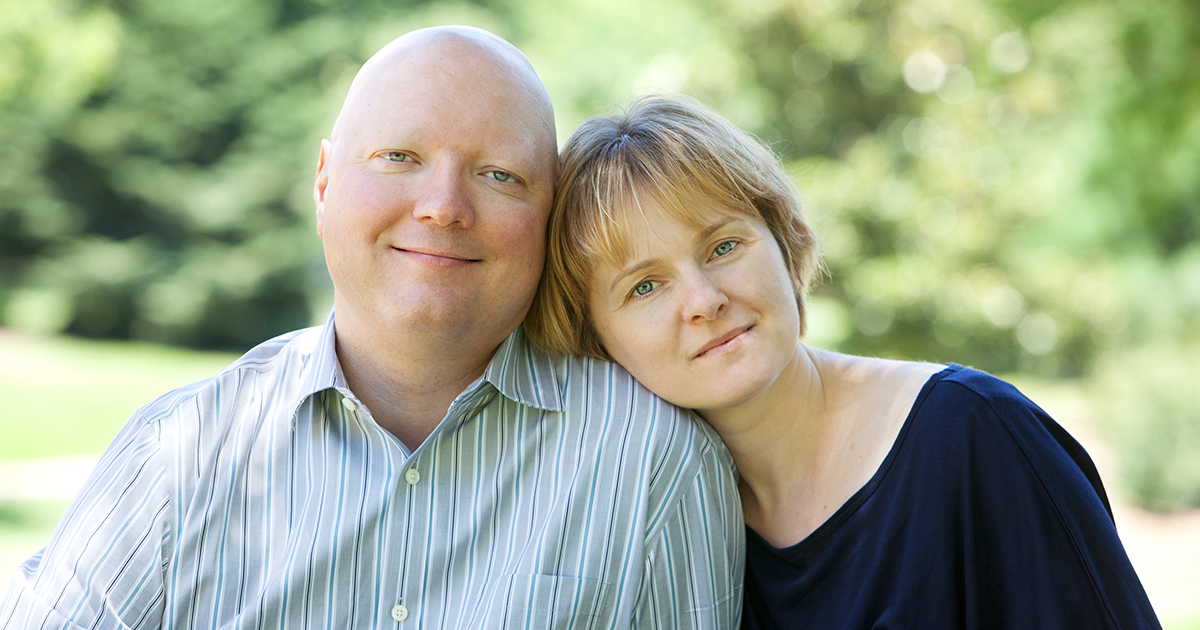About Myelodysplastic Syndrome
In a healthy person, immature blood cells (blood stem cells) in your bone marrow become mature red blood cells, white blood cells, or platelets. Myelodysplastic syndromes occur when something disrupts this process so that the blood cells don’t mature. When immature blood cells (blasts) do not develop normally, they multiply and leave less room for healthy red blood cells, white blood cells, or platelets to form in the bone marrow. Over time, defective cells outnumber healthy ones, which can create complications such as severe anemia, debilitating fatigue, recurrent life-threatening infections, and more. Myelodysplastic syndrome can progress to another form of blood cancer known as acute myeloid leukemia.
Over 10,000 patients per year are diagnosed with myelodysplastic syndrome in the United States. Treatment usually focuses on reducing or preventing complications of the disease and is best managed by a hematologic malignancies specialist.
Types of Myelodysplastic Syndrome
Myelodysplastic syndrome is classified based on which types of blood cells (red blood cells, white blood cells, and platelets) are involved.
Types of myelodysplastic syndrome include:
- Myelodysplastic syndrome with single lineage dysplasia (MDS-SLD): One blood cell type (white blood cells, red blood cells, or platelets) is low in number and appears abnormal under a microscope.
- Myelodysplastic syndrome with multilineage dysplasia (MDS-MLD): Two or three blood cell types (white blood cells, red blood cells, or platelets) are low in number and appear abnormal under a microscope.
- Myelodysplastic syndrome with ring sideroblasts (MDS-RS): One or more blood cell types (white blood cells, red blood cells, or platelets) are low in number and existing red blood cells in the bone marrow contain a ring of excess iron; these cells are called ring sideroblasts.
- Myelodysplastic syndrome associated with isolated del (5q) chromosome abnormality: Red blood cells are low in number and cells in the bone marrow have a specific mutation in their DNA.
- Myelodysplastic syndrome with excess blasts (MDS-EB): Any of the three types of blood cells (red blood cells, white blood cells, or platelets) might be low in number and appear abnormal under a microscope. Very immature blood cells (blasts) are found in the blood and bone marrow. MDS-EB type 1 is associated with fewer blast cells in the blood and bone marrow than MDS-EB type 2.
- Myelodysplastic syndrome, unclassifiable (MDS-U): Subtype in which one of the three types of blood cells (red blood cells, white blood cells, or platelets) are low in number and either the white blood cells or platelets look abnormal under a microscope.
Symptoms of Myelodysplastic Syndrome:
Early myelodysplastic syndrome rarely causes symptoms.
Symptoms of myelodysplastic syndrome may include:
- Frequent infection
- Frequent or unusual bleeding
- Having pinpoint-sized red spots beneath your skin
- Persistent fatigue
- Shortness of breath
- Unusual paleness of the skin
Risk Factors for Myelodysplastic Syndrome
Certain people are at greater risk for myelodysplastic syndrome.
Risk factors for myelodysplastic syndrome may include:
- Age: Though it can occur at any age, myelodysplastic syndrome usually affects those over the age of 60.
- Comorbid conditions: Problems with blood cell formation (e.g., low red blood cells, platelets, or white blood cell counts) increase a person’s risk of myelodysplastic syndrome.
- Family history: A familial/inherited genetic abnormality can increase risk of myelodysplastic syndrome.
- Personal history: Myelodysplastic syndrome is associated with exposure to toxins such as such as tobacco smoke, pesticides, and industrial chemicals (e.g., benzene), and heavy metals like mercury or lead.
- Sex: Male patients are more likely to develop myelodysplastic syndrome.
Treating Myelodysplastic Syndrome at UT Health Austin
Treatment will require an accurate diagnosis and depend on disease progression. Your care team will work with you to develop a treatment plan tailored to your individual needs. Treatment options may include a combination of immunotherapy, chemotherapy, and/or stem cell transplant.
Care Team Approach
At UT Health Austin, we take a multidisciplinary approach to your care. This means you will benefit from the expertise of multiple specialists across a variety of disciplines caring for you in one place to avoid having to schedule multiple appointments with providers at locations all over the city. The Livestrong Cancer Institutes care team includes medical oncologists, surgical oncologists, radiation oncologists, pathologists, radiologists, oncofertility specialists, onco-psychiatrists, genetic counselors, physical therapists, dietitians, social workers, and more as well as other members of the CaLM Care Team who work together to help you get back to the things in your life that matter most to you.
We collaborate with our colleagues at the Dell Medical School and The University of Texas at Austin to utilize the latest research, diagnostic, and treatment techniques, allowing us to provide you with state-of-the-art care. We call our approach to cancer care CaLM (Cancer Life reiMagined), and your treatment begins with a comprehensive, whole-person assessment that your care team will use to develop a personalized care plan to treat your condition and help restore your wellness. The CaLM approach also includes coordinated, whole-person services, such as relaxation and stress reduction strategies, nutritional guidance, financial planning, and emotional support, that can make a real difference for you and your family. Advanced imaging and lab testing are also available on-site if needed.
Learn More About Your Care Team

Hematologic Malignancies
Health Transformation Building, 8th Floor
1601 Trinity Street, Bldg. A, Austin, TX 78712
1-833-UT-CARES (1-833-882-2737)
Get Directions

Livestrong Cancer Institutes
Health Transformation Building, 8th Floor
1601 Trinity Street, Bldg. A, Austin, TX 78712
1-833-UT-CARES (1-833-882-2737)
Get Directions